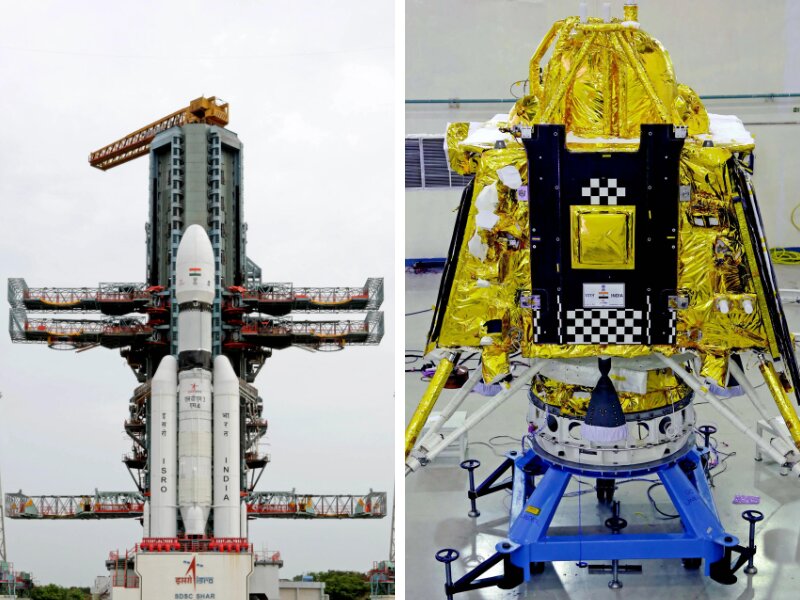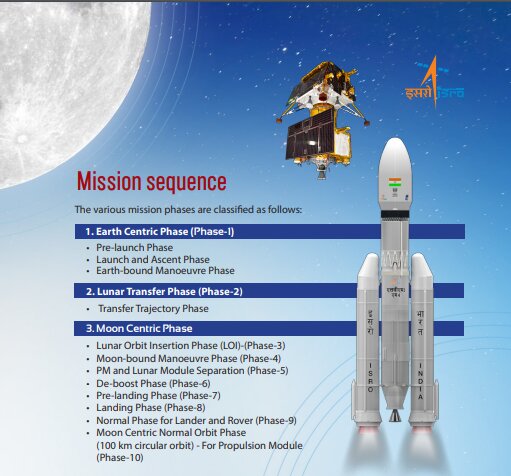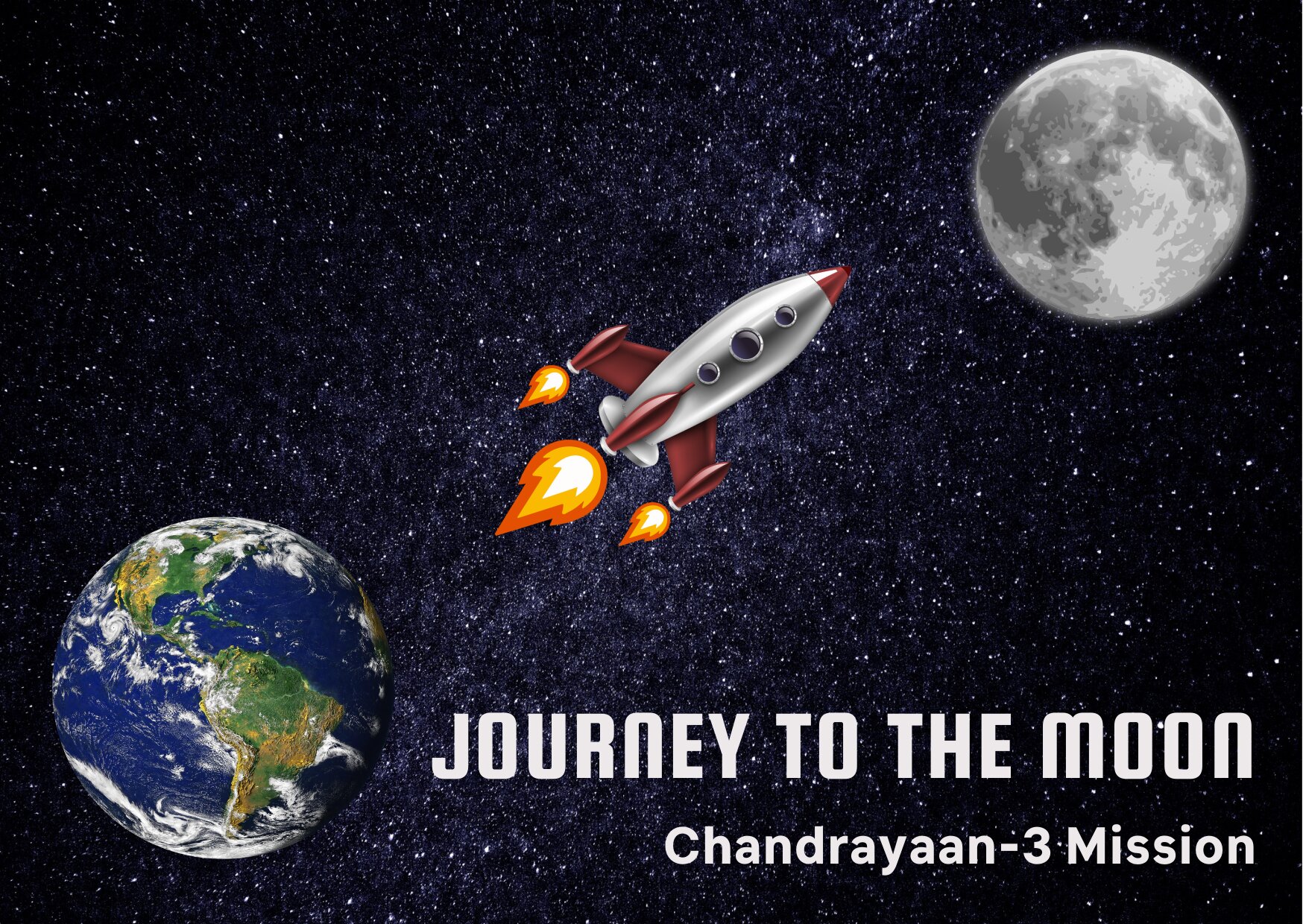Chandrayaan-3, the third moon exploration mission by the esteemed ISRO, is gearing up to make its mark in the annals of space exploration.
Table of content
The launch of Chandrayaan 3 will be carried out by the powerful LVM3 (Launch Vehicle Mark-3) from the Satish Dhawan Space Centre – SDSC, located in Sriharikota, Andhra Pradesh India. This indigenously developed launch vehicle has proven its reliability and efficiency in previous missions, ensuring a smooth journey for Chandrayaan-3.
Mission
| Launch Date | 14 July 2023 14:35 IST (India Standard Time) |
| Landing Date | 23 August 2023 |
| Rocket | LVM3 |
| Contractor | ISRO |

Launched Chandrayaan 3. (Image credit: ISRO)
Chandrayaan-3’s Lander Payloads: Unveiling Lunar Mysteries
Chandrayaan-3, the lunar mission by ISRO, is equipped with a suite of advanced scientific instruments on its lander. These payloads include:
1. ChaSTE( Chandra’s Surface Thermophysical Experiment ): The LunarTherm device, engineered specifically for precise measurement of both thermal conductivity and temperature within the lunar regolith, ChaSTE will provide valuable insights into the moon’s geothermal activity and help scientists better understand its composition.
2. ILSA( Instrument for Lunar Seismic Activity ): This payload is specifically designed to measure and analyze seismicity around landing site. By capturing and studying seismic waves, ILSA will contribute to our understanding of the lunar’s subsurface structure, tectonic activity, and potential moonquakes.
3. LP( Langmuir Probe ): LP is an advanced instrument that will estimate the density and it’s variations of plasma in the lunar exosphere. By studying the plasma environment around the moon, LP will enhance our understanding of its interaction with the solar wind and its effects on the lunar environment.
Moonward Bound: Chandrayaan-3’s Epic 6-Week Voyage

The mission sequence of Chandrayaan 3. (Image credit: ISRO)
ISRO has meticulously divided Chandrayaan-3’s 40th day journey from earth to moon into some distinct segments:
1. Earth-centric Phase
- This phase encompasses the prelaunch, launch, and ascent periods of Chandrayaan3.
- Phase-1 is partially completed with the successful liftoff and separation of Chandrayaan3 from its rocket.
- The ongoing Earth-bound maneuver phase, an integral element of Phase 1, is presently underway as the mission meticulously fine-tunes its trajectory and navigational parameters in preparation for subsequent mission stages.
- During this stage, Chandrayaan3 will complete five orbits around the Earth.
- With each orbit, the spacecraft gradually increases it is distance from our planet.
- The final orbit will set Chandrayaan3 on a moon transfer trajectory, marking the beginning of Phase-2.
2. Lunar Transfer Phase
- Phase-2 involves Chandrayaan3’s journey to the moon.
- The spacecraft will follow the lunar transfer trajectory achieved during the Earth-bound maneuver stage.
- Chandrayaan3 will be propelled towards the moon, gradually leaving Earth’s influence behind.
- This phase is critical for the spacecraft to reach the moon’s vicinity.
3. Moon-centric Phase
- Phase-3 begins with Chandrayaan3 inserting itself into lunar orbit.
- This move marks the initiation of the moon-centric phase.
- During this particular phase, the spacecraft will gracefully perform four consecutive lunar orbits, gradually decreasing its distance to the moon’s surface with each subsequent revolution, ultimately bringing it in close proximity to the lunar terrain.
- This phase allows Chandrayaan3 to gather valuable data and observations about the moon’s surface and environment.
- It sets the stage for potential lunar exploration and scientific discoveries.
By dividing the journey into these three phases, ISRO ensures a systematic and well-planned mission for Chandrayaan3. Each phase serves a specific purpose, from departing Earth, reaching the moon, and ultimately exploring the lunar surface.
Unveiling Lunar Secrets: Chandrayaan-3’s Bold Mission Objectives
1. Safe & Soft Landing on Moon Surface
- A primary objective is to demonstrate a safe & precise landing on the moon surface.
- This entails overcoming the challenges of the moon’s terrain and achieving a gentle touchdown.
- Advanced altimeters, including laser and RF-based altimeters, play a crucial role in accurately measuring the distance between the lander and the lunar surface.
2. Rover Roving on the Moon
- Chandrayaan 3 aims to showcase the capability of a rover to traverse the lunar terrain.
- By demonstrating rover mobility, the mission opens doors for future lunar exploration and scientific investigations.
- Velocimeters such as the Laser Doppler Velocimeter and the Lander Horizontal Velocity Camera enable precise measurement of rover speed and movement.
3. In-situ Scientific Experiments
- The groundbreaking Chandrayaan 3 mission has been intricately crafted with the primary objective of conducting pioneering in-situ scientific experiments directly on the enigmatic lunar surface.
- These experiments will provide valuable insights into the moon’s geology, composition, and environment.
- The mission carries advanced inertial measurement systems, including laser gyro-based inertial referencing and an accelerometer package, to accurately measure and record data during scientific experiments.
With these mission objectives and advanced technologies, Chandrayaan-3 aims to push the boundaries of lunar exploration, paving the way for future scientific discoveries and advancements in space exploration.


Eager to improve your digital security with ease? Our freelance services got you covered! From strengthening your online platform against unwanted visitors to simplifying file sharing, we’ve got easy solutions for all. https://skillset.surge.sh
Скрытая правда и ее отблески
понятие истины ее критерии koah.ru/kanke/62.htm.
Unbiased Review of Glory Casino: Games, Security, Bonuses
glory casino bd https://www.glorycasino24.online .
Jeetwin Casino: Your Trusted Partner for Online Gaming
jeetwin casino bonus http://www.jeetwin.casino .
Join the Winners: Play at Jeetbuzz Casino for Unmatched Thrills
jeetbuzz casino https://www.jeetbuzzcasino.org .
Strategies for Success: Bet Smart with Betandreas Casino
betandreas casino bd http://betsandreascasino.com/ .
Как выбрать агентство по организации похорон: гид для вас
служба организации похорон https://pohoronnoe-bjuro-444.ru/ .
Научитесь делать изысканные муссы и кремы на мастер-классе кондитеров
мастер класс по выпечке тортов http://www.kursy-konditera-moskva.ru/ .
Курсы по продвижению сайтов: ключ к высоким позициям сайта
курсы seo http://kursy–seo.ru .
Лучшие клининговые компании Москвы: рейтинг 2024 года
клининговые компании http://kliningovye-kompanii-reiting1.ru/ .
Курсы SEO 2024: новые тенденции и методики продвижения сайтов
seo курсы https://www.kursy-seo1.ru/ .
Секреты успешного инвестирования в краудлендинг: что нужно знать
вдело краудлендинг http://kraudlending77.ru/ .
Каркасные дома под ключ: ваш первый шаг к собственному дому
каркасные дома под ключ санкт петербург https://karkasnye-doma-pod-klyuch0.ru .
Где взять займ без отказа? Обзор лучших предложений на рынке
какие займы дают без отказа https://zaym-na-karty-bez-otkaza.ru .
Безлимитный интернет и мобильная связь: как это работает для бизнеса
безлимитные тарифы мобильных операторов https://mobilnyj-bezlimitnyj-internet.ru .
Мытье окон в Москве: лучшие специалисты для вашего дома
профессиональная мойка окон https://mytie-okon1.ru/ .
Микрозаймы с низким процентом: где искать
деньги взаймы на карту срочно онлайн https://www.oformit-mikrozajm-onlajn.ru .
Займ на карту с моментальным одобрением 100%: доступно каждому
займ со 100 одобрением https://zajm-100-procentov-odobreniya.ru .
Займ без работы: получите финансирование без справок о доходах
займ на карту без указания работы https://www.zajmy-bez-ukazaniya-raboty.ru/ .
Займ на карту до зарплаты: круглосуточное одобрение, мгновенный перевод
до зарплаты оформить займ https://zajm-do-zarplaty-na-kartu.ru .
Детоксикация в клинике: безопасное избавление от алкогольной зависимости
лечение похмелья нарколог vyvod-iz-zapoya163.ru/samara/lechenie-pohmelya .
Все о займах через Госуслуги: как получить деньги без лишних трудностей
микрозайм госуслуги онлайн https://www.zajm-cherez-gosuslugi.ru .